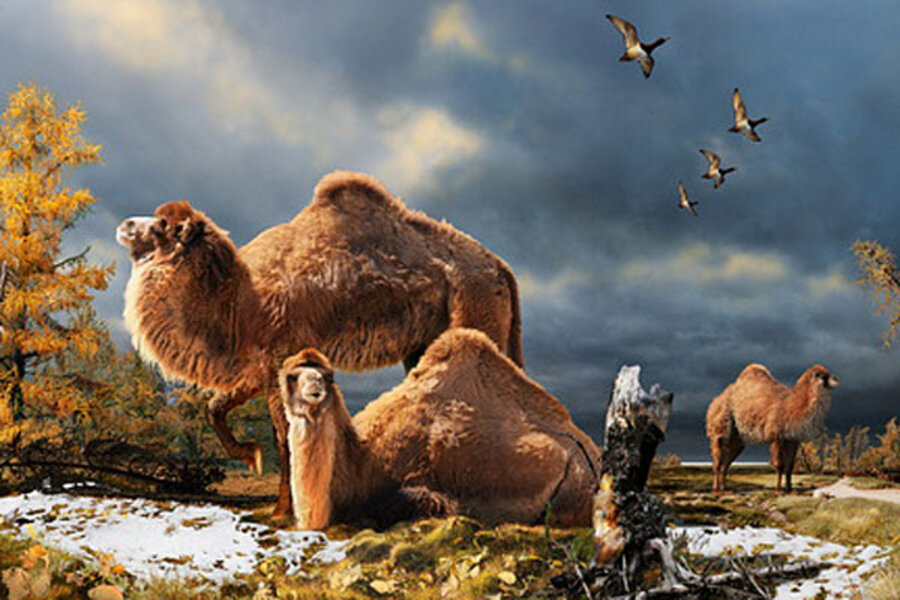Camels evolved in the Arctic, say scientists
Loading...
| Ottawa
Ancient, mummified camel bones dug from the tundra confirm that the animals now synonymous with the arid sands of Arabia actually developed in subfreezing forests in what is now Canada's High Arctic, a scientist said Tuesday.
About 3.5 million years ago, Strathcona Fiord on Ellesmere Island's west-central coast would have looked more like a northern forest than an Arctic landscape, said paleobotanist Natalia Rybczynski of the Canadian Museum of Nature in Ottawa.
"Larch-dominated, lots of wetlands, peat," said Rybczynski, lead author of a study published Tuesday in the journal Nature Communications. Nearby fossil sites have yielded evidence of ancient bears, horses, deer, badgers and frogs. The average yearly temperature would have been about 0 Celsius (32 Fahrenheit).
"If you were standing in it and watching the camel, it would have the feel of a boreal-type forest."
The Arctic camel was 30 percent larger than modern camels, she said. Her best guess is it was one-humped.
Although native camels are now only found in Africa and Asia, scientists have long believed the species actually developed in North America and later died out. Camel remains have been previously found in the Yukon.
What makes Rybczynski's find special is not only how far north it was found, but its state of preservation.
The 30 fragments found in the sand and pebbles of the tundra were mummified, not fossilized. So despite their age, the pieces preserved tiny fragments of collagen within them, a common type of protein found in bones.
Analyzing that protein not only proved the fragments were from camels, but from a type of camel that is much more closely related to the modern version than the Yukon camel. Out of the dozens of camel species that once roamed North America, the type Rybczynski found was one of the most likely to have crossed the Bering land bridge and colonized the deserts.
"This is the one that's tied to the ancestry of modern camels," she said.







